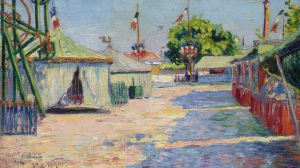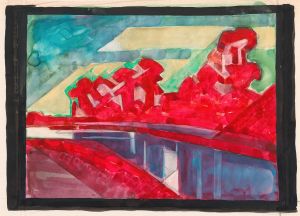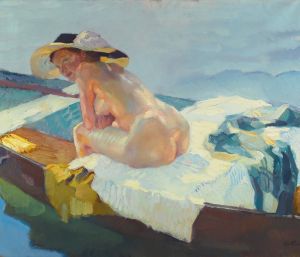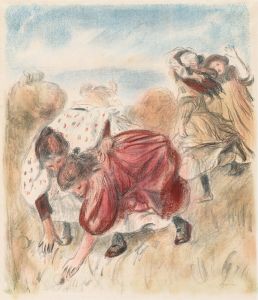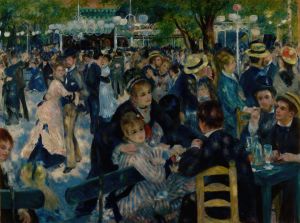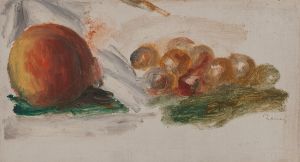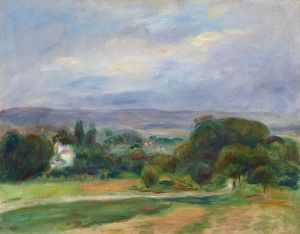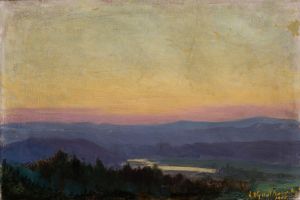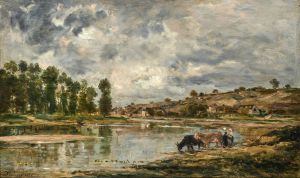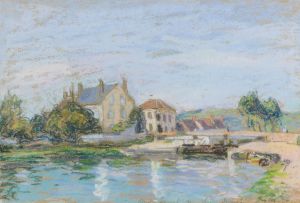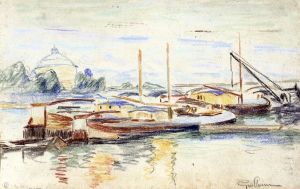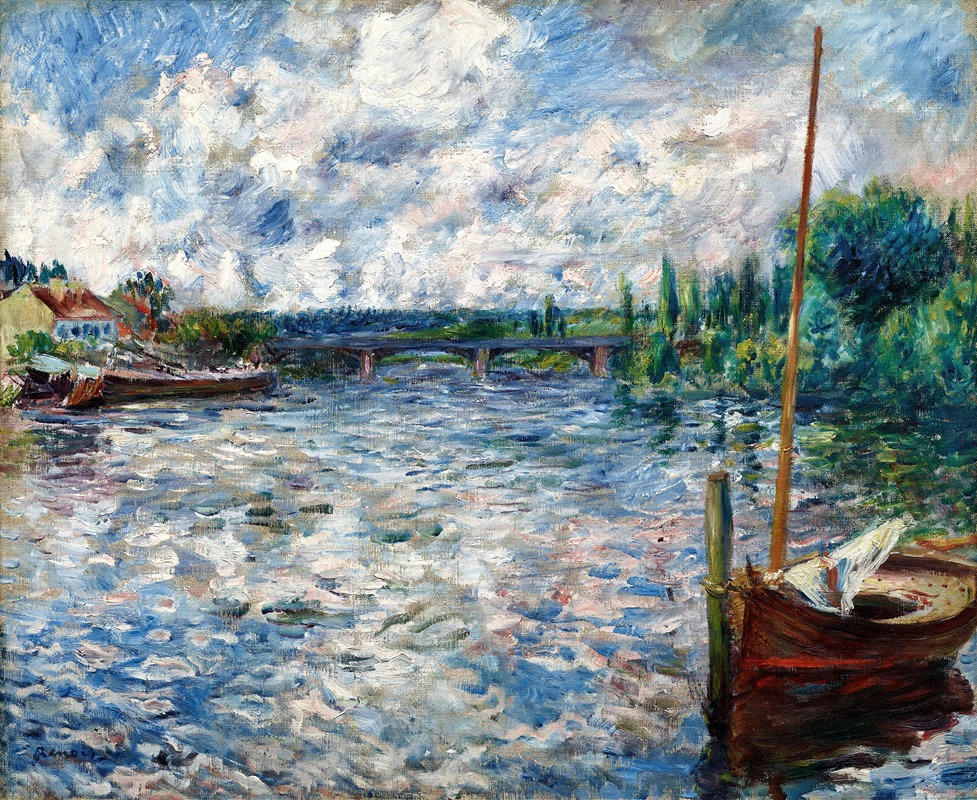
The Seine at Chatou
A hand-painted replica of Pierre-Auguste Renoir’s masterpiece The Seine at Chatou, meticulously crafted by professional artists to capture the true essence of the original. Each piece is created with museum-quality canvas and rare mineral pigments, carefully painted by experienced artists with delicate brushstrokes and rich, layered colors to perfectly recreate the texture of the original artwork. Unlike machine-printed reproductions, this hand-painted version brings the painting to life, infused with the artist’s emotions and skill in every stroke. Whether for personal collection or home decoration, it instantly elevates the artistic atmosphere of any space.
"The Seine at Chatou" is a painting by the renowned French artist Pierre-Auguste Renoir, a leading figure in the Impressionist movement. Renoir, born on February 25, 1841, in Limoges, France, was known for his vibrant light and saturated color, often focusing on people in intimate and candid compositions. His works are celebrated for their beauty, lightness, and the depiction of leisure activities of the time.
This particular painting, "The Seine at Chatou," was completed in 1874, a pivotal year for Renoir and the Impressionists, as it was the year of the first Impressionist exhibition in Paris. This exhibition marked a significant departure from the traditional art norms of the time, showcasing works that emphasized light and color over precise detail.
Chatou is a commune in the western suburbs of Paris, located on the banks of the Seine River. During the late 19th century, it was a popular spot for Parisians seeking leisure and recreation away from the bustling city. The area was known for its picturesque landscapes and was a frequent subject for Impressionist painters, including Renoir. The Seine River, with its gentle flow and reflective waters, provided an ideal setting for exploring the effects of light and atmosphere, central themes in Impressionist art.
In "The Seine at Chatou," Renoir captures the serene beauty of the river landscape. The painting is characterized by its loose brushwork and vibrant palette, typical of Renoir's style. The composition likely includes elements such as boats on the river, lush greenery, and possibly figures enjoying the riverside, though specific details of the painting's content are not universally documented. Renoir's technique involves the use of short, quick brushstrokes to convey the shimmering effects of light on water and foliage, creating a sense of immediacy and movement.
Renoir's work during this period often focused on the interplay of light and shadow, capturing the transient effects of sunlight on natural scenes. His ability to depict the nuances of light and color helped to define the Impressionist movement, which sought to capture the essence of a moment rather than a detailed, realistic representation.
"The Seine at Chatou" reflects Renoir's interest in leisure activities and the natural beauty of the French countryside. It exemplifies the Impressionist fascination with modern life and the changing qualities of light. Renoir's paintings from this era often evoke a sense of joy and tranquility, inviting viewers to appreciate the simple pleasures of life.
While specific details about the painting's current location or provenance may not be widely available, Renoir's works are held in numerous prestigious collections worldwide, including the Musée d'Orsay in Paris, the Metropolitan Museum of Art in New York, and the National Gallery in London. His paintings continue to be celebrated for their contribution to the development of modern art and their enduring appeal.
Renoir's legacy as a master of Impressionism is firmly established, and "The Seine at Chatou" remains a testament to his skill in capturing the fleeting beauty of nature and the leisurely pursuits of his time.





